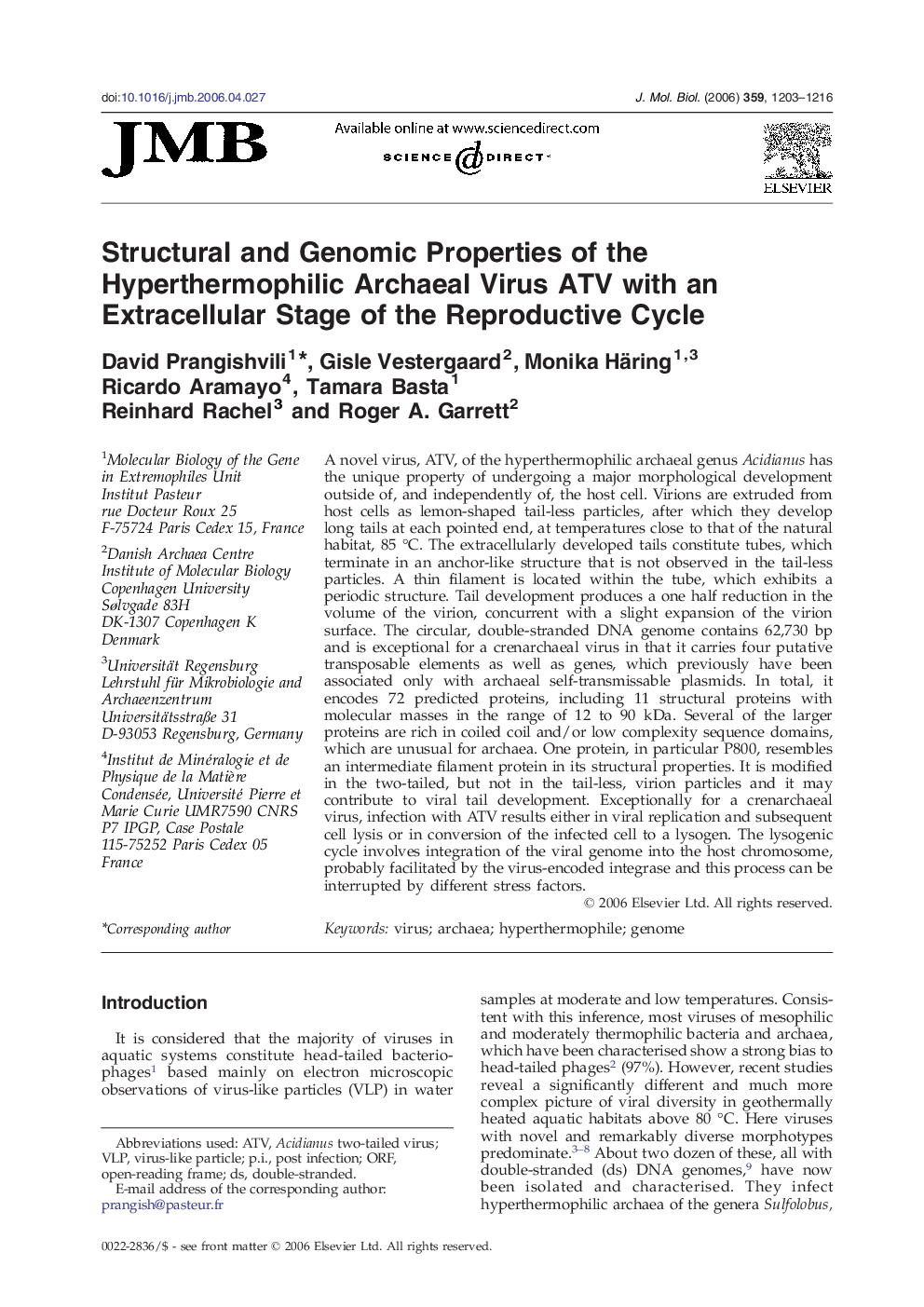| کد مقاله | کد نشریه | سال انتشار | مقاله انگلیسی | نسخه تمام متن |
|---|---|---|---|---|
| 2189401 | 1096210 | 2006 | 14 صفحه PDF | دانلود رایگان |

A novel virus, ATV, of the hyperthermophilic archaeal genus Acidianus has the unique property of undergoing a major morphological development outside of, and independently of, the host cell. Virions are extruded from host cells as lemon-shaped tail-less particles, after which they develop long tails at each pointed end, at temperatures close to that of the natural habitat, 85 °C. The extracellularly developed tails constitute tubes, which terminate in an anchor-like structure that is not observed in the tail-less particles. A thin filament is located within the tube, which exhibits a periodic structure. Tail development produces a one half reduction in the volume of the virion, concurrent with a slight expansion of the virion surface. The circular, double-stranded DNA genome contains 62,730 bp and is exceptional for a crenarchaeal virus in that it carries four putative transposable elements as well as genes, which previously have been associated only with archaeal self-transmissable plasmids. In total, it encodes 72 predicted proteins, including 11 structural proteins with molecular masses in the range of 12 to 90 kDa. Several of the larger proteins are rich in coiled coil and/or low complexity sequence domains, which are unusual for archaea. One protein, in particular P800, resembles an intermediate filament protein in its structural properties. It is modified in the two-tailed, but not in the tail-less, virion particles and it may contribute to viral tail development. Exceptionally for a crenarchaeal virus, infection with ATV results either in viral replication and subsequent cell lysis or in conversion of the infected cell to a lysogen. The lysogenic cycle involves integration of the viral genome into the host chromosome, probably facilitated by the virus-encoded integrase and this process can be interrupted by different stress factors.
Journal: Journal of Molecular Biology - Volume 359, Issue 5, 23 June 2006, Pages 1203–1216